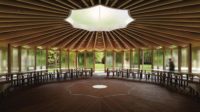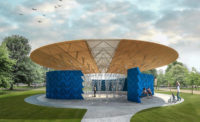In London's Hyde Park, Lina Ghotmeh’s Serpentine Pavilion Invites Visitors to Gather

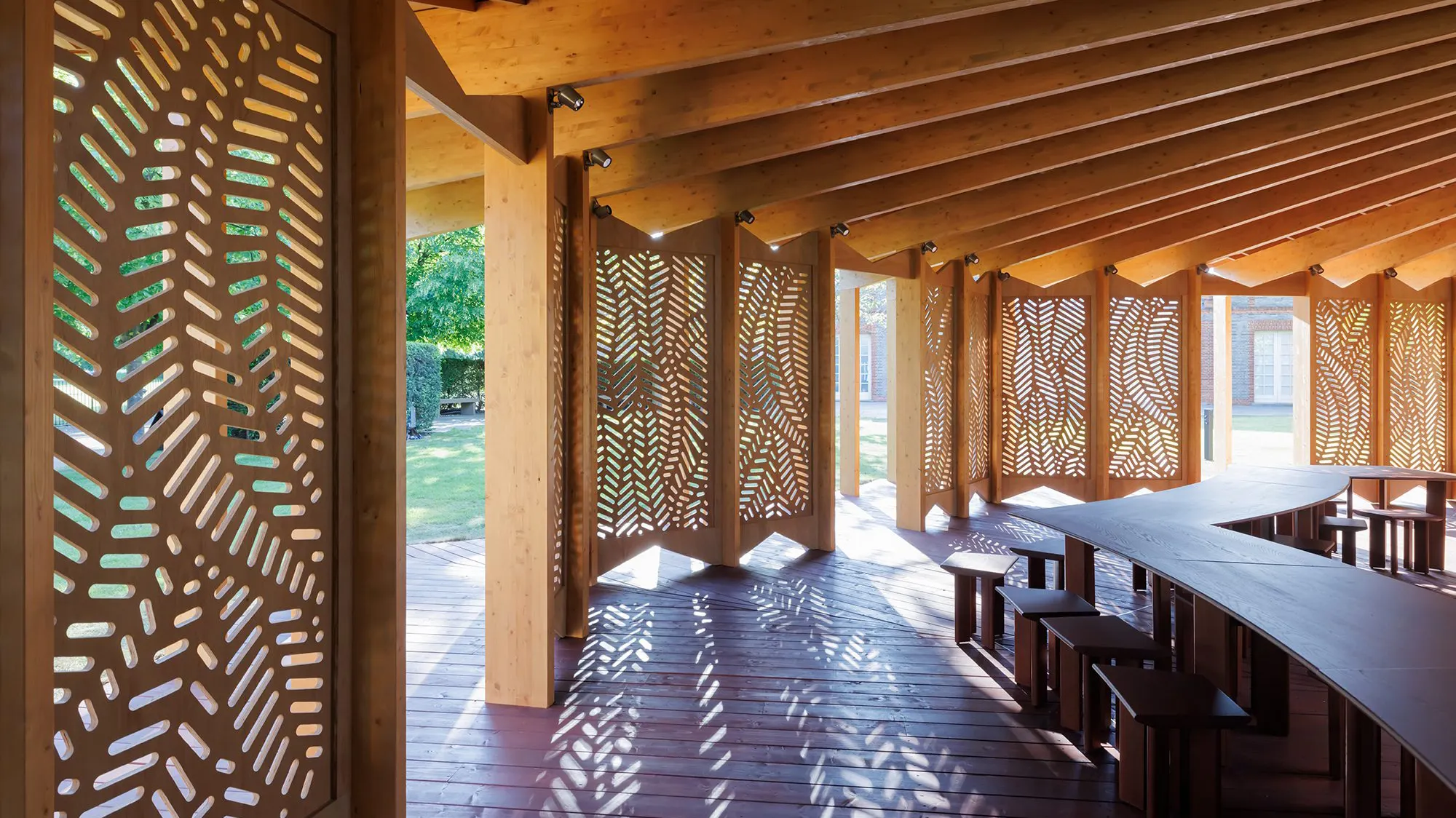
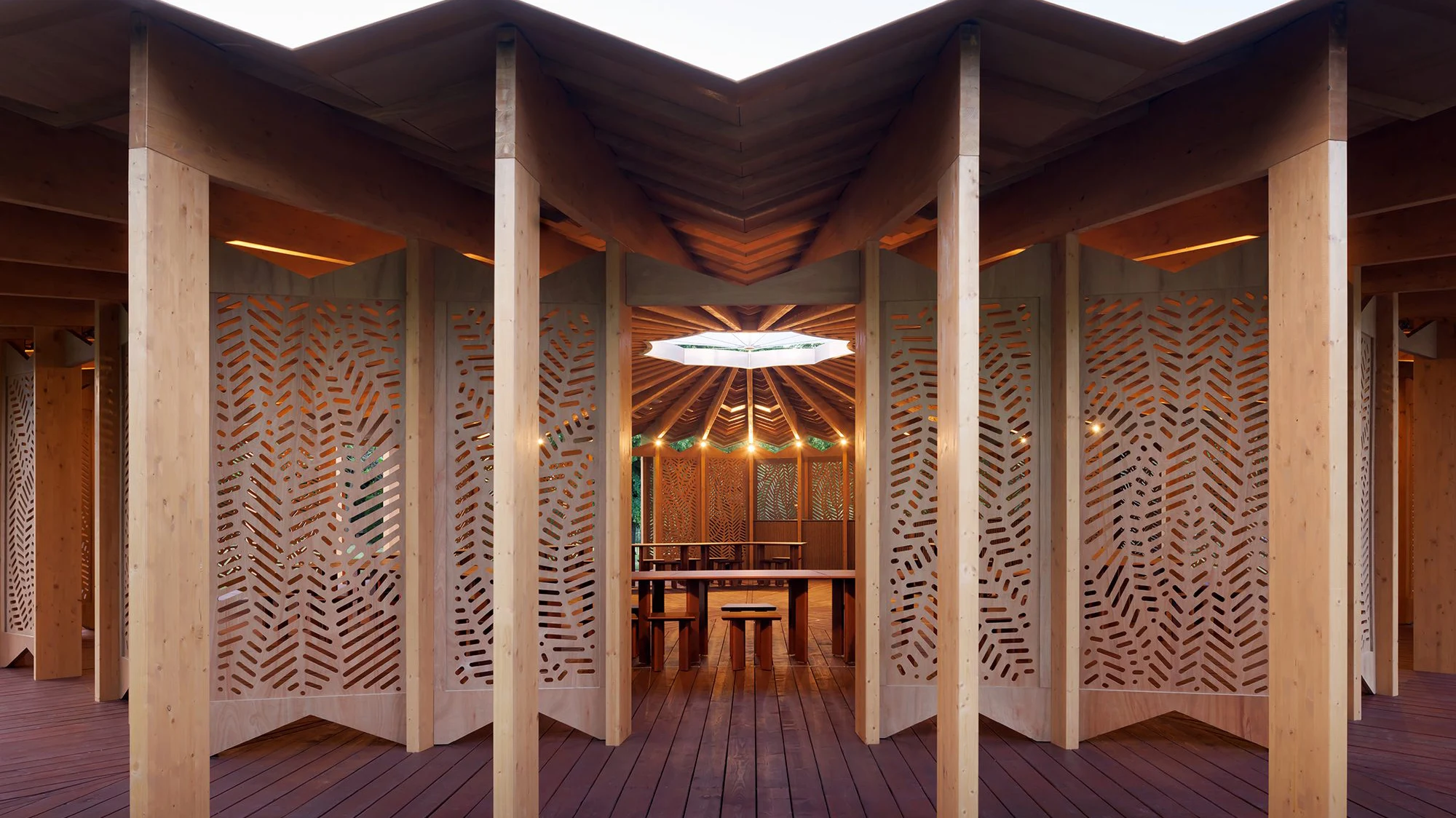
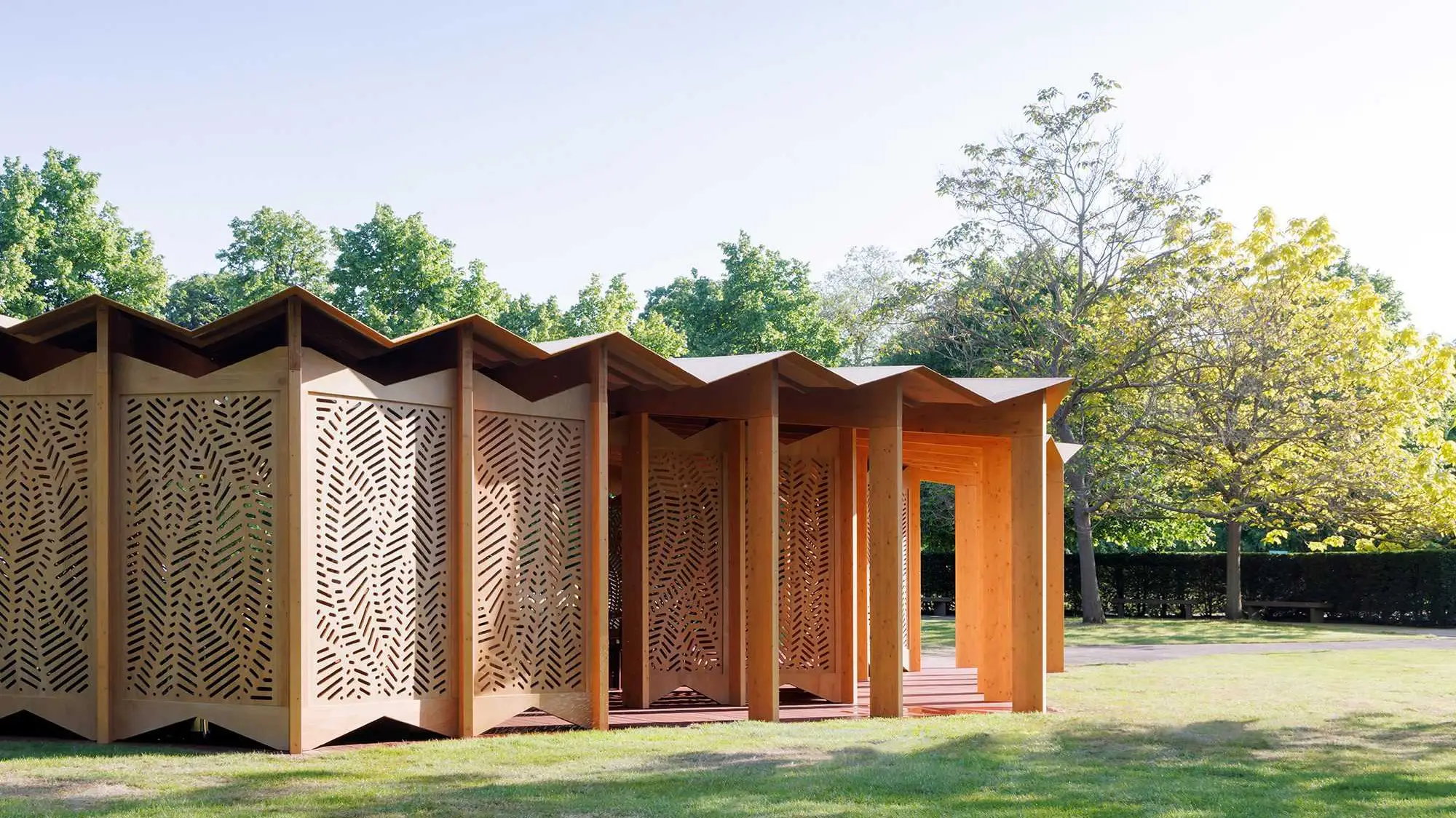
Photo by Iwan Baan, courtesy Serpentine




Architects & Firms
Designed by the French-based Lebanese architect Lina Ghotmeh, this year’s Serpentine Pavilion is a deceptively simple structure made of glulam beams and timber posts, providing Kensington Gardens, one of London’s grand central parks, with an ornate wooden tent. Now in its third decade, the annual Serpentine Pavilion program is, as Ghotmeh puts it, about creating “a temporary smart pavilion that has an intense life for a few months.” Built on the lawn in front of a neoclassical building that was originally a tea room and is now the southern building of the Serpentine Gallery, each pavilion “reflects on the zeitgeist,” says Ghotmeh. “It's a structure that has a message.”

Lina Ghotmeh. Photo © Gilbert Hage
Ghotmeh’s modest but welcoming pavilion, which opens to the public June 9, appears circular in form—though it’s actually a nonagon with convex sides—and is supported on 90 columns arranged in two concentric circles. Whereas several recent pavilions have explored architectural language or sculptural form (think of Junya Ishigami’s daring, slightly preposterous slate roof in 2019 or the Minecraft neoclassicism of Sumayya Vally’s 2021 design), Ghotmeh’s pavilion is derived from an understanding of the building’s program. Within it are 25 small tables that are arranged to form a single concentric, nonagonal table; the idea is that the space will become one in which people meet and eat and sit together. The café included in the pavilion brief has often in the past been treated as extraneous, but Ghotmeh’s design places it at the very heart of the project. Fittingly, the pavilion is titled À table, a French phrase used to call a group together to dine.
While the cheap materials from which it is assembled—it has a pleated plywood roof and simple timber floors—suggest that the zeitgeist may be short on cash, on a deeper level the building suggests that the times call for renewed emphasis on human interaction, and for some fun. From within, the pavilion feels like a circus tent. The outer columns are 7.5 feet high and the inner 8.5 feet, meaning that the 26-foot-long rafters slope gently upward toward the pavilion’s center, where they meet at a set of curved beams that together form an oculus covered with an ETFE membrane. Between each pair of rafters run 16 V-shaped lateral supports that are placed at irregular intervals, disrupting the geometric rigidity of the scheme. These lend the pavilion a slight organic quality, and refer to the leaflike pattern of openings cut into the plywood panels that surround the interior space. This is not the best-detailed pavilion of recent years, but it has a purpose and sense of conviviality that many others have lacked.

Photo by Iwan Baan, courtesy Serpentine
Following the launch of the annual program in 2000, early pavilions were designed by notable architects who had yet to complete a building in the United Kingdom—including such well-established figures as Toyo Ito, Oscar Niemeyer, and Alvaro Siza. In recent years, however, the program has shifted away from selecting famed designers and has instead sought out up-and-coming talent. Ghotmeh is just that. This pavilion has few overt formal gestures, but it is beautifully proportioned and there is a clever rhythm to its structure. These skills of Ghotmeh’s are being acknowledged elsewhere, too: last month Ghotmeh won a competition to build a new contemporary art museum in Al-’Ula, a city in northwest Saudi Arabia. She not coincidentally describes her winning design, the details of which have not yet been released, as “a series of pavilions that are intertwined within an agricultural landscape.”
Although the Serpentine Pavilion will stand for just three months in its current position, it is likely to be sold and re-assembled elsewhere. The Therme Group, which operates luxury spas around the world, has bought the previous four Serpentine Pavilions, including Vally’s and Ishigami’s projects as well as the 2018 pavilion designed by Frida Escobedo and the 2022 pavilion designed by Theaster Gates. It has not yet announced where it will re-assemble those pavilions, or whether it will purchase Ghotmeh’s.


